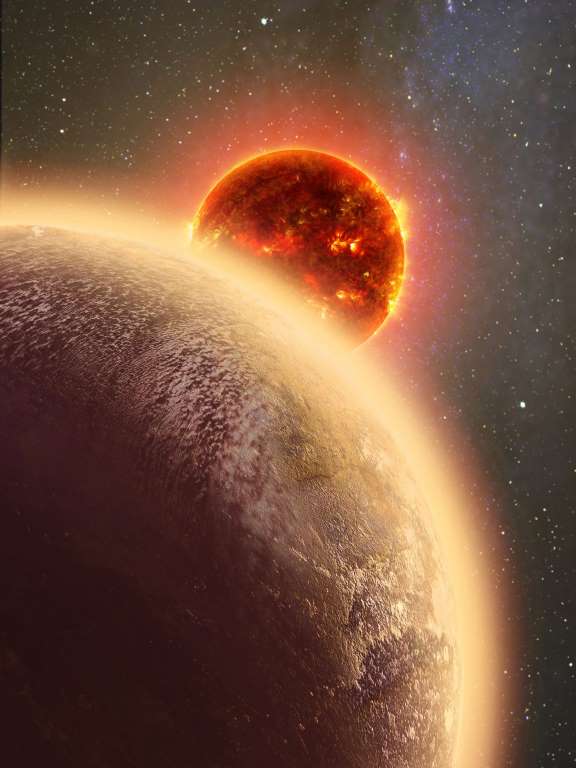February 15, 2013
A close encounter of the rocky kind is set for Friday when an office building-size asteroid will speed past the Earth faster than a bullet and closer than some communications and GPS satellites.

It will be the nearest recorded brush with a space rock so large, NASA scientists said last week.
February 15, 2013
A close encounter of the rocky kind is set for Friday when an office building-size asteroid will speed past the Earth faster than a bullet and closer than some communications and GPS satellites.

It will be the nearest recorded brush with a space rock so large, NASA scientists said last week.
The good news: There's no chance of an impact. At its closest, asteroid 2012 DA14 will pass 17,000 miles above Earth.
The bad news: A million other potentially dangerous — and unknown — city-killing space rocks are out there, and one of them could be on a collision course with Earth. Critics say NASA and other space agencies are not doing enough to scan for these threats.
"It's like mother nature sending a warning shot across our bow," said Don Yeomans, who tracks asteroids for the Jet Propulsion Laboratory in Pasadena, Calif.
Satellite operators said they were monitoring the asteroid but that they expected it to safely cruise through a belt of satellites some 23,000 miles up.
"We're watching the situation but there's not a giant concern," said Alex Horwitz, spokesman for Intelsat, which operates some 50 communications satellites.
The Air Force, meanwhile, is leaving the tracking to NASA.
An astronomer in Spain spied the asteroid a year ago. Small, dim, and speedy, it was a "slippery target" as it moved across a background of stars, said Jaime Nomen of the La Sagra Observatory in southern Spain.
NASA-funded scientists then ran the numbers: The asteroid was about 150 feet wide. Its closest approach will occur at 1:24 p.m. CST on the 15th. On the night side of the planet — mainly Asia and Australia — observers with small telescopes might see a pinpoint streaking at the rapid clip of two moon-widths per minute.
Further observations refined the asteroid's path. It cruises around the sun in an orbit almost identical to Earth's. Our year is 365 days. Its year is a day longer. Like a drunk driver weaving across lanes, asteroid 2012 DA14 crosses paths with Earth twice a year at varying distances.
Despite these opportunities for disaster, scientists tracking the asteroid are confident 2012 DA14 won't collide with us for at least the next century, which is as far as they've been able to project its path. Next week's approach is the closest during that time.
NASA began rigorously scanning the sky for cosmic hazards only in 1998, when Congress told them to. Agency scientists said last week they are confident their network of ground and space telescopes have found at least 95 percent of potentially planet-killing asteroids, those a half-mile wide or more. None of these monsters is headed towards Earth, Yeomans said.
But the agency has done much worse identifying smaller threats, said Ed Lu, a former NASA astronaut. Lu spearheads the B612 Foundation, which last year began raising private funds to build an asteroid-spotting space telescope.
"Saying we're only going to find the civilization-killers is a crappy threshold," said Lu. "We can do better than that." Lu says so far the human race has spotted only about one percent of the smaller, but still dangerous, asteroids near Earth.
Scars on our planet's surface reveal a long history of violent, even cataclysmic, collisions.
An asteroid the size of 2012 DA14 could wipe out a city, said Yeomans. It would explode with a force of 2.5 megatons of TNT — a nuclear bomb nearly 1,000 times more powerful than the one exploded over Hiroshima in 1945.
There is only one recent impact of a space rock so large. In 1908, an asteroid or cometary fragment ploughed into Siberia. The "Tunguska Event," named for the unlucky but unpopulated locale, flattened millions of trees across nearly 1,000 square miles.
Meteor Crater in Arizona — nearly a mile wide — was also likely gouged by an office building-sized space rock about 50,000 years ago.
Moving up the scale of destruction, a "planet killer" some five miles wide slammed into the Gulf of Mexico 65 million years ago, most scientists say, triggering a planet-wide cataclysm that wiped out the dinosaurs. That scenario, once heavily debated, appears more certain after a study published last week in the journal Science found most dinosaurs went extinct relatively soon after that impact. With the dinosaurs gone, mammals thrived, eventually evolving into people.
"I think it's fair to say, without the dinosaurs having gone extinct, we would not be here," Paul Renne, director of the Berkeley Geochronology Center and leader of the study, told the Associated Press.
Much smaller fragments — leftovers from the dawn of the solar system — skip into our atmosphere every day, sometimes streaking spectacularly across the sky as meteors. Car-sized rocks arrive at a clip of about once per year.
Asteroids as big as 2012 DA14 are expected to impact Earth much less frequently — about once every 1,200 years, said Yeomans.
What to do if scientists detect an asteroid headed for Earth? Given enough lead time — say 30 or 40 years — deflecting the threat will be feasible, said Lu. "If something's going to hit we're going to pull out all the stops."
A Hollywood favorite — nuclear bombs — might work, as might gentler means such as parking a spacecraft near the asteroid so that its gravity pulls it to a safe orbit. Last year, the European Commission launched the NEOShield project to start planning such missions.
"The hard part," said Lu, "is finding the million or so asteroids this size or larger and getting advance notice." If 2012 DA14 had been on a collision course for next week, the year-long lead time since its discovery would have been too brief to launch a deflection mission, said Lu.
The B612 Foundation has raised a "few million dollars," said spokeswoman Diane Murphy, but needs $30 million or $40 million a year to build their telescope, which would scan the entire sky for city killer-sized rocks.
Lindley Johnson, who heads NASA's $6 million annual program to find near-Earth threats, acknowledged the agency could do better. "We still have a lot of improvement to make in finding all of the hazardous asteroids," he said.
Case in point: The sky-scanning camera that first spotted asteroid 2012 DA14 was purchased not by NASA, but by a small non-profit group, the Planetary Society.
Courtesy: Daily Herald
















































































































